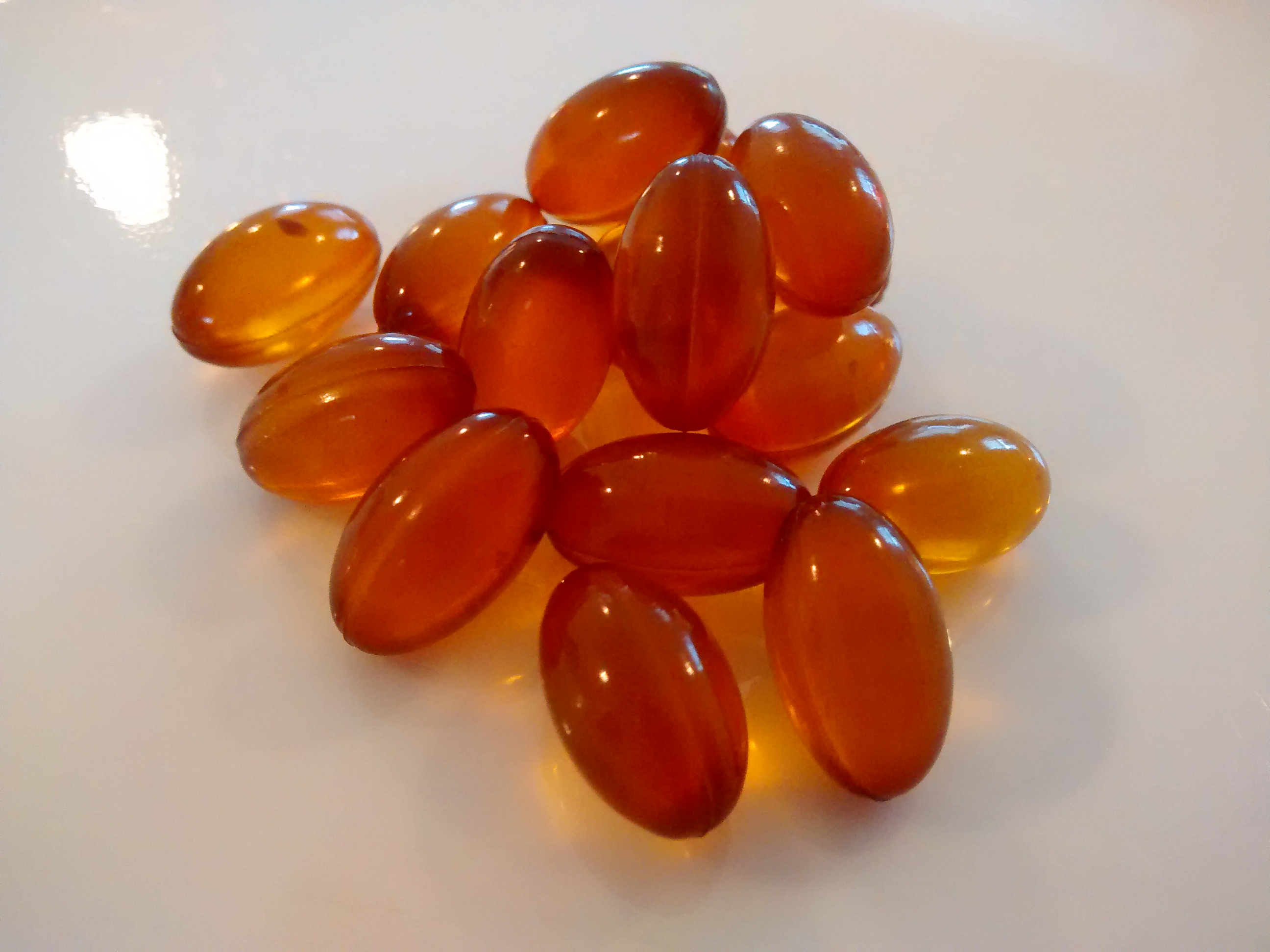|
Clupanodonic Acid
Docosapentaenoic acid (DPA) designates any straight chain 22:5 fatty acid, that is a straight chain open chain type of polyunsaturated fatty acid (PUFA) which contains 22 carbons and 5 double bonds. DPA is primarily used to designate two isomers, ''all''-''cis''-4,7,10,13,16-docosapentaenoic acid (i.e. 4''Z'',7''Z'',10''Z'',13''Z'',16''Z''-docosapentaenoic acid) and ''all''-''cis''-7,10,13,16,19-docosapentaenoic acid (i.e. 7''Z'',10''Z'',13''Z'',16''Z'',19''Z''-docosapentaenoic acid). They are also commonly termed n-6 DPA and n-3 DPA, respectively; these designations describes the position of the double bond being 6 or 3 carbons closest to the (omega) carbon at the methyl end of the molecule and is based on the biologically important difference that n-6 and n-3 PUFA are separate PUFA classes, i.e. the omega-6 fatty acids and omega-3 fatty acids, respectively. Mammals, including humans, can not interconvert these two classes and therefore must obtain dietary essential PUFA fatty aci ... [...More Info...] [...Related Items...] OR: [Wikipedia] [Google] [Baidu] |
Fatty Acid
In chemistry, particularly in biochemistry, a fatty acid is a carboxylic acid with an aliphatic chain, which is either saturated or unsaturated. Most naturally occurring fatty acids have an unbranched chain of an even number of carbon atoms, from 4 to 28. Fatty acids are a major component of the lipids (up to 70% by weight) in some species such as microalgae but in some other organisms are not found in their standalone form, but instead exist as three main classes of esters: triglycerides, phospholipids, and cholesteryl esters. In any of these forms, fatty acids are both important dietary sources of fuel for animals and important structural components for cells. History The concept of fatty acid (''acide gras'') was introduced in 1813 by Michel Eugène Chevreul, though he initially used some variant terms: ''graisse acide'' and ''acide huileux'' ("acid fat" and "oily acid"). Types of fatty acids Fatty acids are classified in many ways: by length, by saturation vs unsa ... [...More Info...] [...Related Items...] OR: [Wikipedia] [Google] [Baidu] |
Eicosapentaenoic Acid
Eicosapentaenoic acid (EPA; also icosapentaenoic acid) is an omega-3 fatty acid. In physiological literature, it is given the name 20:5(n-3). It also has the trivial name timnodonic acid. In chemical structure, EPA is a carboxylic acid with a 20-carbon chain and five '' cis'' double bonds; the first double bond is located at the third carbon from the omega end. EPA is a polyunsaturated fatty acid (PUFA) that acts as a precursor for prostaglandin-3 (which inhibits platelet aggregation), thromboxane-3, and leukotriene-5 eicosanoids. EPA is both a precursor and the hydrolytic breakdown product of eicosapentaenoyl ethanolamide (EPEA: C22 H35 NO2; 20:5,n-3). Although studies of fish oil supplements, which contain both docosahexaenoic acid (DHA) and EPA, have failed to support claims of preventing heart attacks or strokes, a recent multi-year study of Vascepa ( ethyl eicosapentaenoate, the ethyl ester of the free fatty acid), a prescription drug containing only EPA, was sh ... [...More Info...] [...Related Items...] OR: [Wikipedia] [Google] [Baidu] |
List Of Omega-3 Fatty Acids
Omega-3 fatty acids, also called ω−3 fatty acids or ''n''−3 fatty acids, are polyunsaturated fatty acids (PUFAs). Omega−3 fatty acids are important for normal metabolism. Mammals are unable to synthesize omega−3 fatty acids, but can obtain the shorter-chain omega−3 fatty acid ALA (18 carbons and 3 double bonds) through diet and use it to form the more important long-chain omega−3 fatty acids, EPA (20 carbons and 5 double bonds) and then from EPA, the most crucial, DHA (22 carbons and 6 double bonds). List of omega-3 fatty acids List of foods with omega-3 fatty acids List of omega-3 oils {, class="sortable wikitable" ! Oil ! Diet type ! ω−3 content , - , Avocado oil , Fruit/Vegetable , 0.03% , - , Olive oil , Fruit/Vegetable , 0.7% , - , Linseed oil/Flaxseed oil , Seed , 51.9% – 55.2% , - , Hemp oil , Seed , 22% , - , Walnut oil , Seed , 14% , - , Canola oil , Seed , 9% - 11% , - , Soybean oil , Seed , 7% - 10% , - , Mustard oil , Seed , 6% , - , Pumpki ... [...More Info...] [...Related Items...] OR: [Wikipedia] [Google] [Baidu] |
Inflammation
Inflammation (from la, inflammatio) is part of the complex biological response of body tissues to harmful stimuli, such as pathogens, damaged cells, or irritants, and is a protective response involving immune cells, blood vessels, and molecular mediators. The function of inflammation is to eliminate the initial cause of cell injury, clear out necrotic cells and tissues damaged from the original insult and the inflammatory process, and initiate tissue repair. The five cardinal signs are heat, pain, redness, swelling, and loss of function (Latin ''calor'', ''dolor'', ''rubor'', ''tumor'', and ''functio laesa''). Inflammation is a generic response, and therefore it is considered as a mechanism of innate immunity, as compared to adaptive immunity, which is specific for each pathogen. Too little inflammation could lead to progressive tissue destruction by the harmful stimulus (e.g. bacteria) and compromise the survival of the organism. In contrast, too much inflammation, in ... [...More Info...] [...Related Items...] OR: [Wikipedia] [Google] [Baidu] |
Agricultural Research Service
The Agricultural Research Service (ARS) is the principal in-house research agency of the United States Department of Agriculture (USDA). ARS is one of four agencies in USDA's Research, Education and Economics mission area. ARS is charged with extending the nation's scientific knowledge and solving agricultural problems through its four national program areas: nutrition, food safety and quality; animal production and protection; natural resources and sustainable agricultural systems; and crop production and protection. ARS research focuses on solving problems affecting Americans every day. The ARS Headquarters is located in the Jamie L. Whitten Building on Independence Avenue in Washington, D.C. and the headquarters staff is located at the George Washington Carver Center (GWCC) in Beltsville, Maryland. For 2018, its budget was $1.2 billion. Mission ARS conducts scientific research for the American public. Their main focus is on research to develop solutions to agricultural pr ... [...More Info...] [...Related Items...] OR: [Wikipedia] [Google] [Baidu] |
Maresin
Maresin 1 (MaR1 or 7''R'',14''S''-dihydroxy-4''Z'',8''E'',10''E'',12''Z'',16''Z'',19''Z''-docosahexaenoic acid) is a macrophage-derived mediator of inflammation resolution coined from macrophage mediator in resolving inflammation. Maresin 1, and more recently defined maresins, are 12-lipoxygenase-derived metabolites of the omega-3 fatty acid, docosahexaenoic acid (DHA), that possess potent anti-inflammatory, pro-resolving, protective, and pro-healing properties similar to a variety of other members of the specialized proresolving mediators (SPM) class of polyunsaturated fatty acid (PUFA) metabolites. SPM are dihydroxy, trihydroxy, and epoxy-hydroxy metabolites of long chain PUFA made by certain dioxygenase enzymes viz., cyclooxygenases and lipoxygenases. In addition to the maresins, this class of mediators includes: the 15-lipoxygenase (i.e. ALOX15 and/or possibly ALOX15B)-derived Lipoxin A4 and B4 metabolites of the omega 6 fatty acid, arachidonic acid; the cyclooxygenase 2-d ... [...More Info...] [...Related Items...] OR: [Wikipedia] [Google] [Baidu] |
Neuroprotectin
Neuroprotectin D1 (NPD1) (10''R'',17''S''-dihydroxy-4''Z'',7''Z'',11''E'',13''E'',15''Z'',19''Z''-docosahexaenoic acid) also known as Protectin D1 (PD1) is a docosanoid derived from the polyunsaturated fatty acid (PUFA) docosahexaenoic acid (DHA), which is a component of fish oil and the most important omega-3 PUFA. Like other members of the specialized proresolving mediators class of PUFA metabolites, NPD1 exerts potent anti-inflammatory and anti-apoptotic/neuroprotective bioactivity. Other neuroprotectins with similar activity include: PDX (10''R'',17''S''-dihydroxy-4''Z'',7''Z'',11''E'',13''Z'',15''E'',19''Z''-docosahexaenoic acid); 20-hydroxy-PD1 (10''R'',17''S'',20-trihydroxy-4''Z'',7''Z'',11''E'',13''E'',15''Z'',19''Z''-docosahexaenoic acid); and 10-epi-PD1 (10''R'',17''S''-Dihydroxy-4''Z'',7''Z'',11''E'',13''E'',15''Z'',19''Z''-docosahexaenoic acid). The activity of neuroprotectin-like metabolite, 17-epi-PD1 (10''R'',17''R''-dihydroxy-4''Z'',7''Z'',11''E'',13''E'',15''Z'' ... [...More Info...] [...Related Items...] OR: [Wikipedia] [Google] [Baidu] |
Resolvin
Resolvins are specialized pro-resolving mediators (SPMs) derived from omega-3 fatty acids, primarily eicosapentaenoic acid (EPA) and docosahexaenoic acid (DHA), as well as docosapentaenoic acid (DPA) and clupanodonic acid. As autacoids similar to hormones acting on local tissues, resolvins are under preliminary research for their involvement in promoting restoration of normal cellular function following the inflammation that occurs after tissue injury. Resolvins belong to a class of polyunsaturated fatty acid (PUFA) metabolites termed specialized proresolving mediators (SPMs). Biochemistry and production Resolvins (Rvs) fall into several sub-classes based on the straight chain PUFA from which they are formed and/or a unique aspect of their structure. The Resolvin Ds (RvDs) are metabolites of the 22-carbon PUFA, DHA (i.e. 4''Z'',7''Z'',10''Z'',13''Z'',16''Z'',19''Z'')-docosahexaenoic acid); the resolvin Es (RvEs) are metabolites of the 20-carbon PUFA, EPA (i.e. 5''Z'',8''Z'',1 ... [...More Info...] [...Related Items...] OR: [Wikipedia] [Google] [Baidu] |
Specialized Proresolving Mediators
Specialized pro-resolving mediators (SPM, also termed specialized proresolving mediators) are a large and growing class of cell signaling molecules formed in cells by the metabolism of polyunsaturated fatty acids (PUFA) by one or a combination of lipoxygenase, cyclooxygenase, and cytochrome P450 monooxygenase enzymes. Pre-clinical studies, primarily in animal models and human tissues, implicate SPM in orchestrating the resolution of inflammation. Prominent members include the resolvins and protectins. SPM join the long list of other physiological agents which tend to limit inflammation (see ) including glucocorticoids, interleukin 10 (an anti-inflammatory cytokine), interleukin 1 receptor antagonist (an inhibitor of the action of pro-inflammatory cytokine, interleukin 1), annexin A1 (an inhibitor of formation of pro-inflammatory metabolites of polyunsaturated fatty acids), and the gaseous resolvins, carbon monoxide (see ), nitric oxide (see ), and hydrogen sulfide (see and ). ... [...More Info...] [...Related Items...] OR: [Wikipedia] [Google] [Baidu] |
Docosahexaenoic Acid
Docosahexaenoic acid (DHA) is an omega-3 fatty acid that is a primary structural component of the human brain, cerebral cortex, skin, and retina. In physiological literature, it is given the name 22:6(n-3). It can be synthesized from alpha-linolenic acid or obtained directly from maternal milk (breast milk), fatty fish, fish oil, or algae oil. DHA's structure is a carboxylic acid (-''oic acid'') with a 22- carbon chain (''docosa-'' derives from the Ancient Greek for 22) and six (''hexa-'') '' cis'' double bonds (''-en-''); with the first double bond located at the third carbon from the omega end. Its trivial name is cervonic acid (from the Latin word ''cerebrum'' for "brain"), its systematic name is ''all-cis''-docosa-4,7,10,13,16,19-hexa-enoic acid, and its shorthand name is 22:6(n−3) in the nomenclature of fatty acids. Most of the docosahexaenoic acid in fish and multi-cellular organisms with access to cold-water oceanic foods originates from photosynthetic and heterotr ... [...More Info...] [...Related Items...] OR: [Wikipedia] [Google] [Baidu] |
Open Chain
In chemistry, an open-chain compound (also spelled as open chain compound) or acyclic compound (Greek prefix "α", ''without'' and "κύκλος", ''cycle'') is a compound with a linear structure, rather than a cyclic one. An open-chain compound having no side chains is called a straight-chain compound (also spelled as straight chain compound). Many of the simple molecules of organic chemistry, such as the alkanes and alkenes, have both linear and ring isomers, that is, both acyclic and cyclic, with the latter often classified as aromatic. For those with 4 or more carbons, the linear forms can have straight-chain or branched-chain isomers. The lowercase prefix ''n-'' denotes the straight-chain isomer; for example, ''n''-butane is straight-chain butane, whereas ''i''-butane is isobutane. Cycloalkanes are isomers of alkenes, not of alkanes, because the ring's closure involves a C-C bond. Having no rings (aromatic or otherwise), all open-chain compounds are aliphatic. Typically i ... [...More Info...] [...Related Items...] OR: [Wikipedia] [Google] [Baidu] |



